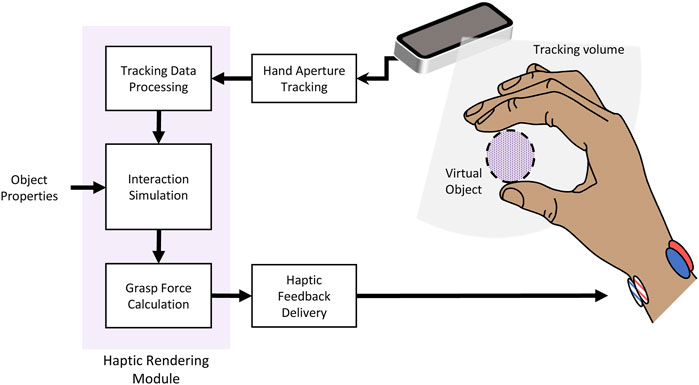Table of Contents
The world of video gaming is ever-evolving, with each advancement in technology bringing players closer to a truly immersive and realistic experience. Haptic feedback, a technology that simulates tactile sensations through vibrations and force, has become a game-changer in the industry. In this article, we will explore the role of haptic feedback in game controllers and how it enhances immersion and realism in modern gaming.
The world of video gaming is a dynamic realm, constantly propelled forward by technological advancements that push the boundaries of what’s possible. As technology continues to evolve, so does the quest for an immersive and realistic gaming experience. One of the game-changers in this quest is haptic feedback, a technology that has revolutionized the gaming industry by adding a tangible layer of sensation to virtual worlds. In this article, we will delve into the pivotal role of haptic feedback in game controllers and how it elevates immersion and realism in modern gaming.
Haptic feedback, often referred to as “haptics,” represents a seismic shift in how players engage with their favorite titles. Gone are the days when gaming was solely a visual and auditory experience. With haptics, players can physically feel the impact of their actions within the game. This technology uses precise vibrations and forces to simulate tactile sensations, allowing players to sense everything from the recoil of a weapon to the rumble of a roaring engine.
One of the most notable examples of haptic feedback in action is found in controllers like the DualSense for the PlayStation 5 and the Xbox Series X controller. These controllers are equipped with advanced haptic motors that respond to in-game events, translating them into tangible feedback. For instance, when a player fires a weapon, the controller can replicate the recoil with nuanced vibrations, providing a more realistic and immersive shooting experience. When driving a virtual car, the controller can convey the feeling of different terrains and road conditions, enhancing the sense of control and connection to the game world.
Haptic feedback doesn’t stop at replicating physical sensations alone. It also plays a crucial role in conveying environmental cues. For instance, when a character in the game is walking on different surfaces like sand, grass, or metal, the controller can mimic the texture and resistance of those materials, immersing players further into the narrative.
Furthermore, haptics extend beyond controllers. VR (Virtual Reality) headsets use haptic feedback to make virtual environments feel more lifelike. With VR gloves and suits equipped with haptic technology, users can experience a wide range of sensations, from the warmth of sunlight on their virtual skin to the gentle touch of raindrops.
The introduction of haptic feedback has transformed gaming into a multisensory experience, blurring the line between the virtual and real worlds. It’s not just about enhancing immersion; it’s about creating a sense of presence, where players feel like they are truly inhabiting the game world.
In conclusion, haptic feedback has emerged as a game-changer in the world of gaming, ushering in a new era of immersive and realistic experiences. With each advancement in haptic technology, players can expect to be drawn even deeper into the worlds they explore, forging stronger connections with their favorite games and characters. As technology continues to advance, the future of gaming promises to be more tactile, more immersive, and more thrilling than ever before.
For a comprehensive look at this subject, we invite you to read more on this dedicated page: Haptic feedback in first person shooter video games
The Science of Haptic Feedback
Haptic feedback, often referred to as simply “haptics,” is the technology that recreates the sense of touch in a virtual environment. It uses vibrations and force feedback to simulate physical sensations that correspond to in-game actions. This can range from the gentle rumble of a car engine to the powerful kickback of a firing weapon.
Haptic feedback, or “haptics,” is a remarkable technology that bridges the gap between the digital and physical worlds in ways that enhance our immersive experiences. By replicating the sense of touch in virtual environments, haptics adds a new layer of realism and interactivity to a wide range of applications, including gaming, augmented reality, and beyond.
Immersive Gaming Experiences: In gaming, haptic feedback is a game-changer. It allows players to not just see and hear the game but also feel it. The gentle vibrations of footsteps, the jolt of an explosion, or the subtle texture of a virtual object in their hands all contribute to a deeper sense of immersion. Gamers are no longer mere spectators; they become active participants in the digital world.
Realistic Training Simulations: Beyond gaming, haptics has found applications in training and simulations. For instance, in military training, haptic feedback can replicate the recoil of firearms, allowing soldiers to practice weapon handling and marksmanship in a controlled environment. Similarly, in medical training, students can perform virtual surgeries and feel the resistance and feedback as if they were using real surgical instruments.
Enhanced Communication: Haptics has the potential to transform the way we communicate in the digital realm. Virtual handshakes, hugs, or even the sensation of holding someone’s hand in a virtual meeting can add a profound layer of emotional connection to remote interactions. This can be especially meaningful in the context of telehealth, where a comforting touch or gesture can convey empathy and reassurance.
Accessibility and Inclusivity: Haptic feedback can benefit individuals with disabilities by providing tactile cues and feedback. For example, in accessibility settings, it can assist visually impaired users in navigating digital interfaces, making technology more inclusive and user-friendly.
Art and Creativity: Haptics opens up new frontiers in creative expression. Artists and designers can use haptic feedback to create interactive installations and experiences that engage the sense of touch. This fusion of technology and art expands the possibilities for storytelling and artistic expression.
Medical Rehabilitation: Haptic feedback is employed in rehabilitation and physical therapy to assist patients in regaining mobility and strength. Devices equipped with haptics can guide patients through exercises and provide feedback to aid in their recovery.
Consumer Electronics: Haptic feedback is becoming increasingly prevalent in consumer electronics. Smartphones use it to provide tactile responses to touch gestures, making interactions more engaging and intuitive. Wearables like smartwatches use haptic feedback for notifications and alerts, offering discreet and personalized feedback to users.
Future of Augmented Reality: As augmented reality (AR) continues to evolve, haptics will play a pivotal role in enhancing AR experiences. Users will not only see and hear virtual objects but also feel their presence and interact with them in more tangible ways.
In summary, haptic feedback technology is a powerful tool that blurs the lines between the digital and physical realms. It enriches our experiences across various domains, from gaming and training to communication and art. As this technology continues to advance, it holds the promise of revolutionizing how we interact with and perceive the digital world, bringing us closer to truly immersive and multisensory experiences.
For a comprehensive look at this subject, we invite you to read more on this dedicated page: Improving the Immersion in Virtual Reality with Real-Time Avatar …

Immersive Gameplay
One of the primary benefits of haptic feedback is its ability to immerse players in the gaming experience. When you’re playing a first-person shooter, for example, and your controller replicates the recoil of a firearm, you feel more connected to the action on the screen. This immersion can make even fantastical or otherworldly games feel tangible and immediate.
nullTo delve further into this matter, we encourage you to check out the additional resources provided here: Trending in reviews

Realism in Sensations
Haptic feedback allows players to feel the world within the game. Walking on different surfaces, like sand or metal, can be distinguished by the unique vibrations and sensations in the controller. These realistic tactile cues add depth to the gaming experience, making it more engaging and believable.
Haptic feedback in gaming has introduced an entirely new dimension to the way players interact with virtual worlds, bridging the gap between the digital and physical realms. The intricate tactile sensations generated by haptic feedback technology not only make gaming more immersive but also redefine the boundaries of what’s possible in interactive entertainment. Let’s delve deeper into the significance of haptic feedback and its transformative impact on the gaming experience:
Immersive Realism: Haptic feedback transports players into the heart of the game’s environment. The ability to differentiate between surfaces like sand, metal, or water through tactile cues adds an unprecedented level of realism. Gamers can truly “feel” the virtual world under their fingertips, enhancing immersion and suspension of disbelief.
Enhanced Engagement: Tactile feedback deepens player engagement by involving another sense—touch. Instead of relying solely on visual and auditory stimuli, gamers now receive information through physical sensations. This multi-sensory experience keeps players more engaged and invested in the game’s narrative and challenges.
Spatial Awareness: Haptic feedback contributes to spatial awareness within the game. Players can intuitively sense their surroundings and make more informed decisions based on tactile cues. This newfound spatial awareness is particularly valuable in genres like virtual reality (VR), where players navigate immersive 3D environments.
Gameplay Feedback: Beyond environmental cues, haptic feedback provides valuable gameplay feedback. It can convey information about character health, weapon conditions, or the impact of actions. For instance, a controller might simulate the recoil of a firearm, enhancing the sense of control and realism in shooting games.
Accessibility: Haptic feedback can be a game-changer for players with disabilities. It offers an alternative way to experience games, particularly for those with visual or auditory impairments. Tactile cues can replace or augment audio and visual feedback, making games more accessible to a broader audience.
Emotional Resonance: Haptic feedback can evoke emotions in players. Feeling the heartbeat of a character during a tense moment, the rush of acceleration in a racing game, or the impact of a powerful attack can elicit visceral emotional responses, creating a deeper connection between the player and the game’s narrative.
Innovation and Creativity: The integration of haptic feedback encourages game developers to explore innovative ways to leverage this technology. It sparks creativity in game design, leading to novel gameplay mechanics and experiences that were previously unimaginable.
Competitive Advantage: Games that incorporate haptic feedback often have a competitive advantage in the market. They offer a unique selling point that attracts gamers seeking a more immersive and sensory-rich experience.
Health and Well-being: Haptic feedback can contribute to player well-being. It encourages physical interactions and movements, promoting active gaming experiences. This aligns with the trend of gamification for fitness and physical rehabilitation.
Future Possibilities: As haptic technology continues to advance, the possibilities are limitless. From simulating complex textures to conveying temperature variations, future iterations of haptic feedback have the potential to redefine the way we perceive and interact with virtual environments.
In summary, haptic feedback has emerged as a game-changing innovation in the gaming industry, reshaping the way players experience and engage with virtual worlds. Its ability to convey realism, enhance engagement, provide crucial feedback, and improve accessibility makes it an integral part of the evolving gaming landscape. As technology continues to evolve, haptic feedback promises to push the boundaries of what’s achievable in interactive entertainment, promising even more immersive and captivating gaming experiences in the future.
Looking for more insights? You’ll find them right here in our extended coverage: (PDF) Haptic around: multiple tactile sensations for immersive …

Enhancing Storytelling
In narrative-driven games, haptic feedback can be a powerful storytelling tool. Imagine feeling the heartbeat of your character as they approach a tense moment in the plot or experiencing the vibrations of a monster’s footsteps approaching. These subtle touches can heighten emotions and make the narrative more impactful.
In the realm of narrative-driven games, the integration of haptic feedback represents an exciting frontier for storytelling innovation. It’s not just about playing a game; it’s about becoming an active participant in a captivating narrative. Here’s an extended exploration of how haptic feedback can serve as a potent storytelling tool, adding depth and immersion to the gaming experience:
Emotional Resonance: Haptic feedback has the unique ability to tap into our emotions on a visceral level. Imagine playing a character in a heart-pounding, suspenseful scene. As your character approaches a pivotal moment, you feel their heartbeat quicken through subtle vibrations or pulsations in the controller. This physical sensation syncs with the character’s emotional state, creating a profound connection between you and the narrative. Your own pulse quickens in tandem with the character’s, immersing you fully in their emotional journey.
Atmospheric Enhancements: In a narrative-driven game, the environment often plays a pivotal role in storytelling. Haptic feedback can enhance the sense of place and atmosphere by conveying environmental cues. For instance, as you explore a dark and foreboding forest, the controller can simulate the rustling of leaves, the swaying of trees, or the subtle tremors of an impending storm. These sensations transport you to the game’s world, allowing you to feel the very essence of the narrative environment.
Character Empathy: Effective storytelling hinges on the audience’s ability to empathize with the characters. Haptic feedback can deepen this connection by conveying the characters’ physical sensations. When a character experiences fear, pain, or exhilaration, the controller can mimic these sensations. Feeling the tension in their muscles, the shiver of fear, or the rush of adrenaline brings you closer to the character’s perspective. It’s as if you’re experiencing their emotions firsthand, forging a profound bond with their journey.
Immersive Encounters: In-game encounters, whether with allies or adversaries, can be transformed by haptic feedback. When engaging in a dialogue with a character, the controller can provide subtle tactile cues, such as vibrations or pulsations, that reflect the emotional tone of the interaction. This amplifies the impact of your choices and decisions, making each encounter feel more significant and consequential.
Sensory Storytelling: Haptic feedback can extend beyond the controller to other sensory cues, such as audio and visual elements. For example, synchronized vibrations in the controller can complement dramatic audio cues, creating a multisensory storytelling experience. Additionally, in combination with virtual reality (VR) or augmented reality (AR) technologies, haptic feedback can blur the lines between the virtual and real world, immersing you fully in the narrative.
Subtle Narrative Hints: Haptic feedback can be employed as a subtle storytelling tool, offering hints and clues that guide your decisions and progress in the game. A gentle vibration or pulse might signify the discovery of a hidden object or a critical plot point, encouraging exploration and engagement with the narrative.
In summary, haptic feedback has the potential to revolutionize storytelling in games. It bridges the gap between the player and the narrative, transforming passive consumption into active participation. By allowing players to physically experience the emotions, environments, and sensations of the game world, haptic feedback elevates storytelling to new heights of immersion and emotional impact. It’s a testament to how technology is not just enhancing gameplay but also redefining how we engage with narratives in the gaming medium.
You can also read more about this here: A systematic review of immersive virtual reality applications for …

Tactical Advantage
Haptic feedback can provide valuable information to players in real-time. For instance, in a racing game, the controller’s vibrations can convey the state of your vehicle, such as tire grip or engine stress. This feedback allows players to make split-second decisions and adjust their gameplay accordingly.
Haptic feedback, often referred to as “tactile feedback,” is a game-changing technology that adds an extra layer of immersion and engagement to the gaming experience. Beyond just enhancing realism, it serves as a crucial communication channel between players and the virtual worlds they inhabit. Here’s an extended exploration of the significance of haptic feedback in gaming:
Immersive Realism: Haptic feedback transports players into the heart of the action by simulating physical sensations. In a racing game, the subtle vibrations of the controller can replicate the rumble of tires on different road surfaces—whether it’s the grip of asphalt, the slipperiness of rain-soaked pavement, or the rugged terrain of off-road tracks. This realism not only amplifies immersion but also enriches the gameplay with sensory cues.
Dynamic Information: Haptic feedback is an intuitive way to convey dynamic information that’s essential for gameplay. For instance, as a player’s vehicle accelerates, the controller can transmit the sensation of the engine’s roar and the surge of speed. Conversely, when the car decelerates or encounters obstacles, players feel the corresponding changes in vibrations. These cues empower players with real-time information about their in-game environment.
Tire Grip and Handling: In racing simulations, the sensation of tire grip is crucial. Haptic feedback can communicate how well the tires are gripping the road. When the tires start to lose traction during a sharp turn, players can feel the subtle shift in vibrations, prompting them to adjust their steering and throttle control to regain control of the vehicle.
Damage and Impact: Beyond handling, haptic feedback informs players about the condition of their vehicle. When the car sustains damage or collides with obstacles, the controller can simulate the impact through vibrations. This feedback not only adds a layer of realism but also serves as a visual substitute, allowing players to focus on the gameplay without constantly checking on-screen indicators.
Environmental Effects: Haptic feedback extends beyond the vehicle itself. It can convey environmental effects like road surface irregularities, weather conditions, and even the sensation of wind resistance during high-speed sections. These cues help players adapt their strategies and navigate challenges with precision.
Enhancing Gameplay Decisions: Split-second decisions are integral to gaming, and haptic feedback contributes significantly to players’ ability to make informed choices. By feeling changes in the controller’s vibrations, players can assess situations quickly and adjust their gameplay strategies accordingly. This responsiveness adds depth and skill to gaming experiences.
Accessibility: Haptic feedback is not limited to visual or auditory cues, making it a valuable accessibility tool for gamers with hearing or vision impairments. It provides an alternative means of experiencing and understanding the game environment, ensuring that gaming is inclusive for all.
Future Innovations: As technology continues to advance, haptic feedback is poised to become even more sophisticated. Innovations like adaptive haptic feedback can dynamically adjust sensations based on in-game scenarios, further enhancing immersion and realism.
In conclusion, haptic feedback is a game-changer in the world of gaming, offering players an immersive and dynamic means of experiencing virtual environments. From conveying the nuances of tire grip to simulating damage and impact, haptic feedback serves as a vital tool for gamers, allowing them to make informed decisions, enhance their gameplay skills, and lose themselves in the thrilling worlds of modern video games. As technology continues to evolve, we can expect even more intricate and immersive haptic experiences in gaming.
For additional details, consider exploring the related content available here Haptic Technology: The Future of Engagement? – MassChallenge

Differentiation Among Game Elements
Haptic feedback can distinguish between various in-game actions and events. A gentle vibration might signify a successful lock-picking attempt, while a stronger force feedback could indicate a failed attempt. This differentiation adds another layer of interaction and strategy to games.
nullFor additional details, consider exploring the related content available here How to Create Immersive VR Games with Sound and Haptic Feedback

Inclusivity and Accessibility
Haptic feedback is not only about immersion; it also enhances accessibility in gaming. Players with visual or auditory impairments can rely on haptic feedback cues to navigate the game world and understand in-game events. This inclusivity ensures that more players can enjoy the gaming experience.
Haptic feedback in gaming represents a remarkable convergence of technology and accessibility, with its impact reaching far beyond mere immersion. It serves as a game-changer, quite literally, by providing a tactile dimension to the gaming experience. Here’s an extended exploration of how haptic feedback is not only about immersion but also a powerful tool for enhancing accessibility in gaming:
1. Navigational Aid: For players with visual impairments, traditional visual cues in games may be of limited use. Haptic feedback steps in as a navigational aid, offering tactile guidance through vibrations or force feedback. For instance, a character’s movements or the proximity to objects can be conveyed through distinct vibrations, allowing visually impaired players to navigate the game world with confidence.
2. Information Conveyance: Haptic feedback transcends the boundaries of visual and auditory channels, making it an invaluable tool for conveying critical in-game information. Players with auditory impairments can rely on haptic cues to understand events like approaching enemies, incoming attacks, or environmental changes. This cross-modal communication ensures that important game elements are accessible to all.
3. Realistic Interaction: Haptic feedback bridges the gap between players and the virtual world, providing a sense of realism in interactions. For example, when a player interacts with objects or surfaces in the game, haptic feedback can simulate the sensation of touch, making the gaming experience more immersive. This tactile interaction is particularly beneficial for players who may have difficulty discerning on-screen elements alone.
4. Inclusivity and Enjoyment: The ultimate goal of haptic feedback in gaming is inclusivity, ensuring that players of all abilities can enjoy the immersive and interactive aspects of the gaming world. This democratization of gaming experiences means that individuals with various impairments can fully participate in the gaming community and share the enjoyment with others.
5. Customization and Adaptation: Haptic feedback systems are often customizable, allowing players to adjust the intensity and types of feedback to suit their preferences and needs. This adaptability ensures that each player can tailor the haptic experience to match their unique requirements, making gaming more accessible on an individual level.
6. Educational Potential: Beyond gaming, haptic feedback can have educational applications, particularly in immersive learning experiences. It can enhance training simulations, virtual labs, and educational games, making learning more engaging and accessible to a diverse range of learners.
7. Driving Innovation: The integration of haptic feedback in gaming has driven innovation in both hardware and software development. This innovation extends to other fields, such as rehabilitation therapy, where haptic feedback is used to aid patients in regaining motor skills or tactile sensitivity.
In conclusion, haptic feedback in gaming is a technological advancement that transcends entertainment; it’s a powerful tool for accessibility and inclusivity. By providing tactile cues and immersive experiences, it opens up new horizons for individuals with visual, auditory, or other impairments, ensuring that gaming is not an exclusive domain but an inclusive and enjoyable pastime for all. Haptic feedback exemplifies how technology can empower individuals, enhance accessibility, and enrich the overall gaming experience.
If you’d like to dive deeper into this subject, there’s more to discover on this page: Audiohaptic Feedback Enhances Motor Performance in a Low …

Future Possibilities
As technology continues to advance, so does the potential of haptic feedback. Emerging technologies like haptic gloves and full-body haptic suits promise even greater immersion and realism. The future of gaming holds exciting possibilities for integrating haptic feedback into a broader range of experiences.
The realm of haptic feedback is poised for remarkable growth and innovation, propelled by the relentless march of technology. With each advancement, the potential for creating immersive experiences expands, promising a future in which haptic feedback becomes an integral part of diverse applications beyond gaming. Here’s a closer look at the exciting possibilities:
Haptic Gloves and Suits: Emerging technologies, such as haptic gloves and full-body haptic suits, are at the forefront of the haptic feedback revolution. These wearables provide users with a tactile sensation that extends beyond mere vibrations. Haptic gloves, for instance, can simulate the feeling of touching objects or surfaces in a virtual environment, enhancing immersion and interactivity. Full-body haptic suits take it a step further, allowing users to feel sensations across their entire bodies, from a gentle breeze to the impact of a virtual punch. These innovations are not limited to gaming but have applications in fields like training, healthcare, and design.
Training and Simulation: Haptic feedback holds immense potential in training scenarios. Whether it’s medical professionals practicing surgeries in a virtual environment, pilots simulating flight conditions, or soldiers training for combat situations, realistic tactile feedback can enhance the effectiveness of training programs. Haptic feedback can replicate the sensations and forces encountered in real-life situations, making training more authentic and impactful.
Healthcare and Rehabilitation: In healthcare, haptic technology can aid in physical rehabilitation and therapy. Patients recovering from injuries or surgeries can benefit from haptic feedback devices that provide sensory input and assist in motor skill development. For example, haptic gloves can guide patients through rehabilitation exercises, ensuring proper form and movement.
Design and Engineering: Haptic feedback can revolutionize the design and engineering fields. Architects, engineers, and product designers can use haptic devices to feel the surfaces and structures they are creating in a virtual environment. This tactile interaction can lead to more intuitive and innovative design processes.
Entertainment and Storytelling: Beyond gaming, haptic feedback can enhance the entertainment industry. Imagine watching a movie or TV show and feeling the physical sensations of the characters, or reading a book and experiencing the textures described in the narrative. Haptic feedback has the potential to create a multi-sensory storytelling experience that immerses audiences on a deeper level.
Accessibility: Haptic technology can significantly improve accessibility for individuals with disabilities. For those with visual impairments, haptic feedback can convey information about their surroundings or provide navigation assistance. Similarly, it can assist deaf individuals by translating auditory cues into tactile sensations.
Telepresence and Remote Work: In an increasingly remote and interconnected world, haptic feedback can bridge the physical divide. Telepresence systems equipped with haptic capabilities can make remote meetings and collaborations more lifelike. Imagine shaking hands with a colleague across the globe or feeling the texture of a document during a virtual presentation.
Art and Creativity: Haptic feedback can become a tool for artists and creators to express themselves in new ways. Sculptors, painters, and digital artists can use haptic devices to manipulate virtual materials with a tangible sense of touch, expanding the possibilities of artistic expression.
In essence, the future of haptic feedback is characterized by boundless potential. As technology continues to advance and innovations like haptic gloves and suits gain traction, haptic feedback will transcend the realm of gaming to become an integral part of a broader spectrum of experiences, ranging from training and healthcare to entertainment and creativity. It promises to redefine how we interact with and perceive the digital and physical worlds, ushering in an era of unprecedented immersion and realism.
Additionally, you can find further information on this topic by visiting this page: The Future Of Virtual Reality (VR)

The Appeal of Haptic Feedback
In an industry where realism and immersion are paramount, haptic feedback has become a sought-after feature. Gamers appreciate the tactile connection it provides, making the virtual world feel more tangible and interactive. As game developers continue to harness the power of haptic feedback, players can look forward to more immersive and engaging experiences in the world of gaming.
The integration of haptic feedback in the gaming industry represents a significant leap forward in the quest for heightened realism and immersion. This innovation not only enhances the gaming experience but also opens up exciting possibilities for the future:
Immersive Storytelling: Haptic feedback doesn’t just stop at enhancing the sensation of touch; it extends to conveying emotions, environmental changes, and narrative elements. As game developers refine their use of haptic technology, players can expect to feel the weight of in-game decisions, the rush of wind in a virtual world, or even the heartbeat of a character during intense moments. This level of immersion will redefine storytelling in gaming, making narratives even more emotionally impactful.
Enhanced Gameplay Mechanics: Haptic feedback can be integrated into gameplay mechanics to provide players with critical information and feedback. For instance, in a first-person shooter game, a player might feel the subtle kickback of a weapon, helping them gauge recoil and accuracy. In a racing game, haptic feedback can convey the terrain, road conditions, and vehicle handling, providing a more intuitive and responsive gaming experience.
Accessibility and Inclusivity: Haptic technology has the potential to make gaming more accessible to a broader audience, including individuals with visual or auditory impairments. By using tactile feedback to convey vital game information, developers can create experiences that cater to a diverse player base, promoting inclusivity in the gaming community.
Multiplayer and Social Interaction: Haptic feedback can enhance social interactions in multiplayer gaming. Handshakes, high-fives, or even virtual hugs can be conveyed through haptic feedback, fostering a sense of connection and camaraderie among players, even if they are physically distant.
Exploration and Learning: Haptic feedback can be employed in educational and simulation games to facilitate experiential learning. For instance, medical students can practice surgical procedures in a virtual environment with haptic feedback simulating the sensation of incisions and sutures. This application of haptic technology extends beyond entertainment, offering valuable training experiences.
Customization and Personalization: Players may have the ability to customize their haptic feedback settings, allowing them to fine-tune their gaming experience to match their preferences and comfort levels. This personalization empowers players to tailor their immersion level according to their individual sensitivities and gaming goals.
Cross-Platform Integration: As haptic technology gains traction, its integration is likely to extend across various gaming platforms, including consoles, PC gaming, mobile devices, and VR headsets. This cross-platform compatibility will ensure that players can enjoy haptic-enhanced gaming experiences regardless of their preferred gaming setup.
Artistic Expression: Game developers and designers can leverage haptic feedback as an artistic tool to convey emotions and create unique gameplay experiences. The subtle nuances of touch can be used to evoke specific feelings or reactions in players, adding depth and complexity to game narratives and mechanics.
In summary, the evolution of haptic feedback in gaming is not merely about replicating the sense of touch but also about transforming how players engage with virtual worlds. As developers continue to push the boundaries of this technology, gamers can anticipate even more immersive, emotionally resonant, and interactive experiences that blur the line between reality and the virtual realm. Haptic feedback is poised to play a pivotal role in the ongoing evolution of the gaming industry, enriching the way we play and experience games.
You can also read more about this here: Teslasuit | Meet our Haptic VR Suit and Glove with Force Feedback

Haptic feedback is revolutionizing the gaming industry by enhancing immersion, realism, and accessibility. It adds a tactile dimension to gaming that was once unimaginable, allowing players to feel and experience the virtual world in a way that was previously reserved for science fiction. As this technology continues to evolve, it will play an increasingly vital role in shaping the future of gaming, making it a more sensory-rich and captivating form of entertainment for players of all backgrounds and abilities.
nullLooking for more insights? You’ll find them right here in our extended coverage: Haptic feedback in first person shooter video games
More links
You can also read more about this here: Teslasuit | Meet our Haptic VR Suit and Glove with Force Feedback
